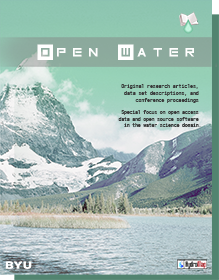Article Title
Keywords
Blue Nile, Earth Engine, Anger valley, Gutin, East Wollega
Abstract
Earth Engine is a platform designed to enable petabyte-scale, scientific analysis and visualization of geospatial datasets set to be released by Google. Currently under limited release for ‘trusted testers’ only, it is a platform that makes available nearly 40 years of the world’s satellite imagery with cloud computing resources and tools for scientists and researchers. The platform is set to provide computational power using Google’s parallel processing power and access to develop and/or run algorithms on the full Earth Engine data archive. Its applications include detecting deforestation, classifying land-cover and estimating forest biomass and carbon. In this study, we demonstrate the application this major development in spatial data analysis to assess and visualize loss of forest vegetation with a demonstration on one of the dynamically shifting watersheds, the Anger valley, in the Upper Blue Nile basin in Ethiopia. The Anger valley, located in the South-West part of the Upper Blue Nile in Ethiopia, around Gutin in East Wollega zone, was sparsely populated prior to the 1980’s, and was primarily home to pristine forest and Savana grassland. Since the early 1980’s, however, the Valley has undergone major land-cover changes mainly due to population in-migration, first through formal resettlement programs pushed by the then regime, and later by various resource pull factors. Landsat-5-32 Day NDVI composite images from three periods: May 08-June 09, 1984; May 08-June 09, 2000; and May 08-June 09, 2011 were taken to assess the vegetation cover of the valley. Twenty-seven known locations and land-cover types in the Valley (9 polygons each for forest, grassland, and cultivation) were used as training polygons on the Landsat image of 2011. The Landsat image from 2011 was trained with the Fast Native Bayes classifier (one of the many classifier algorithms provided with the platform) with 30m resolution on the 27 polygon locations. Then, the trained classifier was applied on the 1984 as well as for the 2000 Landsat images. The result of this simplified procedure demonstrates a significant loss in vegetation cover in the Anger valley. The forest cover has gone down from around 39% in 1984 to 24% in 2000 and to 16.5% in 2011. Grassland has decreased from a total coverage of 45% in 1984 to 27.5% 2000 and 15% in 2011. Cultivation has seen a large expansion from merely 16% in 1984 to 48.5% in 2000 and to 68.5 in 2011. We believe that the tools and computing resources (access to massive archives of satellite imagery data , cloud computation power as well as various image analysis algorithms) provided with the Earth Engine platform, although yet at its testing stage, is very promising for scientists, researchers and the public in general and for those who lack the software and hardware resources in particular to process, analyze and model and visualize such huge amount of bio-environmental data and dynamics of the Earth system.
BYU ScholarsArchive Citation
Yalew, Seleshi G.; van Griensven, Ann; and Mul, Marloes M.
(2013)
"The Use of Google’s Earth Engine for Assessing Vegetation Cover in the Anger Valley, Upper Blue Nile basin,"
Open Water Journal: Vol. 2:
Iss.
1, Article 23.
Available at:
https://scholarsarchive.byu.edu/openwater/vol2/iss1/23
